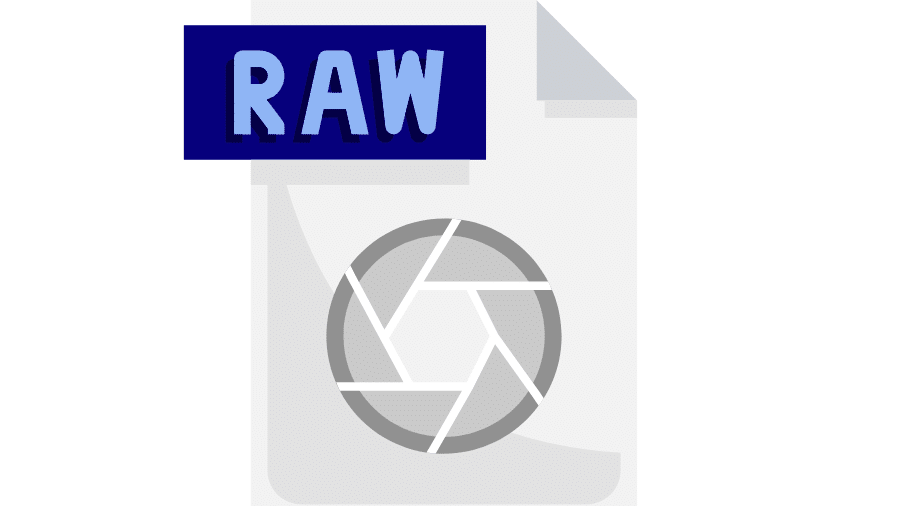If you’re an aspiring photographer, you may have heard the term RAW picture thrown around. You may have also heard conflicting opinions about its relevance and whether or not you should bother shooting in this format.
In this blog post, we’ll dive into the RAW picture meaning and why it’s essential for digital photography. We’ll also discuss its advantages and disadvantages, the history of RAW format, popular software used to edit it, and tips for taking better shots in RAW.
Related: Can You Edit RAW Files in Lightroom?
What is a RAW picture format, and why it’s essential for digital photography

RAW is an image file format used in digital photography that preserves the original data captured by the camera’s sensor. This includes information like color temperature, white balance, brightness, and contrast. This allows you to have greater control when editing your photos, as you can manipulate these settings without losing quality.
On the other hand, JPEG compresses the original data and discards some of it, resulting in a smaller file size and a loss of quality. RAW pictures are larger files, but they also offer much more flexibility and potential for editing.
Advantages of shooting in RAW
Shooting in RAW has several advantages; perhaps the biggest one is its flexibility. Because all of the original data is preserved, you can adjust your photos without worrying about losing quality.
This means you can adjust exposure, white balance, and other settings after the fact without compromising the integrity of your image.
RAW pictures also offer a higher dynamic range, meaning they can capture more detail in the highlights and shadows. This allows for more nuanced and complex images.
Disadvantages of using RAW pictures
One of the most significant disadvantages of shooting in RAW is the larger file size. RAW files are much larger than JPEGs, so you’ll need more storage space. They also require more processing power to edit, as the larger file size means more data to manipulate.
Another disadvantage is that RAW files require more editing than JPEG. While JPEGs are meant to be the final product, RAW pictures require processing in software before they can be used. This means you’ll need to invest more time and effort into editing your photos.
The history of the RAW format
The RAW format actually predates digital photography itself. In the early days of film, photographers sometimes used a “romm-back” to take a photo of the original film negative. This created a positive image that was essentially a RAW file.
With the shift to digital photography in the 1990s and early 2000s, RAW formats became more standardized and widely used. Today, most digital cameras have the option to shoot in RAW format.
Popular software used to edit RAW pictures.
There are dozens of software options to edit RAW pictures, but some of the most popular include Adobe Lightroom, ON1 Photo RAW, and Capture One. These programs allow you to adjust your images, from simple brightness and contrast settings to more complex color grading and retouching.
What is Adobe Camera RAW?
Adobe Camera RAW is a plugin for Adobe Photoshop that allows you to edit RAW images. It offers many tools and features for adjusting your photos, including exposure settings, white balance, color grading, and retouching. It’s a powerful tool for getting the most out of your RAW pictures.
Tips for taking better shots in RAW format
If you’re new to shooting in RAW, here are a few tips to get started:
- Shoot in RAW+JPEG mode to have a backup JPEG in case you need it.
- Use a tripod to keep your shots steady and ensure sharpness.
- Pay attention to white balance, as RAW format captures all of the original data related to color temperature.
- Remember to experiment with exposure settings; the RAW format lets you adjust exposure more easily than JPEGs.
Verdict: RAW Picture Meaning
Understanding the RAW picture meaning in digital photography is important because it offers greater flexibility and control over your photos. While there are some drawbacks to shooting in RAW, the benefits often outweigh them. With the right software and techniques, the RAW format can help you take your photography to the next level.
Frequently Asked Questions
Is cr2 RAW?
Yes. CR2 is the file extension used by Canon cameras to save RAW files. In fact, CR2 is one of the most popular file types for RAW images among photographers. Whether you’re a seasoned pro or an amateur just starting out, it’s essential to understand the importance of RAW and the different file types available.
What is Apple RAW Photo?
Apple RAW Photo is a game-changer for anyone looking to capture their memories in a high-quality format. It allows photographers to capture and edit images with more flexibility and precision.
But what exactly is it? In simple terms, RAW photos are uncompressed image files that retain the original data captured by the camera’s sensor.
This means you can adjust the temperature, exposure, and color without sacrificing quality. Apple has taken this a step further by creating its own RAW photo format optimized for its devices. Whether you’re a professional photographer or just looking to capture your family’s adventures, Apple RAW Photo is worth exploring.